By Christopher Miskimon
In order to establish the necessary conditions for the final conquest of England … I therefore order the Luftwaffe to overpower the English air force with all forces at its command, in the shortest possible time.”
So came the order from Adolf Hitler in Fuhrer Directive Number 17, issued on August 1, 1940. England’s aerial defenders had to be rendered ineffective before German ground forces could cross the English Channel and defeat what was left of the British Army, so recently evacuated from the beaches at Dunkirk and Calais. With England knocked out of the war, the Nazis’ western flank would be secure, enabling the Third Reich to concentrate against the Soviet Union.
Before that could happen, the Royal Air Force had to be defeated, but that required more than just shooting down the Spitfire and Hurricane fighters that rose up against German bombers whenever they approached the British coastline. The British fighters were supported and directed by an extensive network of radar sites, early-warning outposts, and other stations designed to detect enemy attacks and send Britain’s limited number of interceptors directly where they were needed. It was not enough simply to send fighter against fighter; the English defenses were well integrated, and taking out one element of them was not enough. On August 12, 1940, the Germans launched history’s first attack against air defenses other than fighters and their bases. The Nazis were going after the radar stations.
Hauptmann (Captain) Walter Rubensdörffer led a force of 14 Me-110s and eight Me109s west toward England at 9:00 that morning. An earlier mission had struck an airfield nearby to prevent British fighters from intercepting. The group flew perpendicular to the south-facing radar site at Rye. The radar of the time lacked azimuth-tracking capability. By flying perpendicular to it, the return radar signal gave inaccurate range information, causing the British to misidentify the formation as possibly friendly. The Germans went on to bomb the Pevensey station, without interference from the nearby British No. 501 Squadron.
Passing Dover, Rubensdörffer detached his Me-109s to attack the Swingate radar site. Half the fighters carried 250kg bombs, but they failed to do any damage. The rest of the attack force hit Pevensey, dropping eight bombs. The radar survived, but the electricity supply was knocked out for most of the day, rendering it ineffective. The Germans returned to base, but three hours later Rubensdörffer returned with 21 aircraft to make a low-level attack on the Manston airfield, where the RAF’s No. 65 Squadron was lining up to take off.
 There was no warning at all for the British, and a German officer noted, “Our bombs fell right among them.” Some Dornier bombers followed and dropped more bombs on the air base. As a result, nine British planes of various models were destroyed along with two hangars damaged and the destruction of the base’s maintenance workshops. The runways were cratered, leaving the airfield unusable for 12 hours, so incoming planes had to land elsewhere. The German force escaped with no losses.
There was no warning at all for the British, and a German officer noted, “Our bombs fell right among them.” Some Dornier bombers followed and dropped more bombs on the air base. As a result, nine British planes of various models were destroyed along with two hangars damaged and the destruction of the base’s maintenance workshops. The runways were cratered, leaving the airfield unusable for 12 hours, so incoming planes had to land elsewhere. The German force escaped with no losses.
The attacks of August 12 were perhaps the world’s first example of what is known today as SEAD, Suppression of Enemy Air Defenses. It was part of an evolving operational doctrine for the use of air forces and part of the German plan to reduce British air power before the planned amphibious assault named Operation Sea Lion. This German attempt was the first counter-air campaign against what is now known as an integrated air-defense system. It failed, and England remained in the war. Nevertheless, the Battle of Britain was an epic engagement in the skies, one that is told from the German perspective in To Defeat the Few: The Luftwaffe’s Campaign to Destroy RAF Fighter Command August-September 1940 (Douglas C. Dildy and Paul F. Crickmore, Osprey Publishing, Oxford, UK, 2021, 384pp., maps, photographs, appendices, glossary, notes, bibliography, index, $40.00, hardcover).
Most English-language accounts of the Battle of Britain center on the British perspective; this new work provides the opposing perspective. The book is detailed, with much information on squadrons, locations, and mission results. There are also numerous sidebars with data on major aircraft types and other facets of the fighting. This publisher is known for the quality of its illustration, and this volume lives up to that reputation with numerous color and black-and-white photographs. Useful appendices and clear diagrams are also used to convey information to supplement the text. While the German attempt to knock out the RAF thankfully failed, the story of their effort is interesting and worth retelling.
 1,271 Days a Soldier: The Diaries and Letters of Col. H.E. Gardiner as an Armor Officer in World War II (Edited by Dominic J. Caraccilo, University of North Georgia University Press, Dahlonega, GA, 2021, 338 pp., maps, photographs, bibliography, $24.99, softcover)
1,271 Days a Soldier: The Diaries and Letters of Col. H.E. Gardiner as an Armor Officer in World War II (Edited by Dominic J. Caraccilo, University of North Georgia University Press, Dahlonega, GA, 2021, 338 pp., maps, photographs, bibliography, $24.99, softcover)
Henry Gardiner joined the U.S. Army in November 1935, with the rank of private in an Illinois National Guard cavalry unit. In June 1940, he received a commission as a lieutenant. By October 1945, he was a battle-hardened colonel with years of combat service in North Africa and Italy. He commanded a battalion and served as the executive officer of a regiment, among other myriad duties. During the North African campaign, he received the Distinguished Service Cross for gallantry. Gardiner spent the entire war as part of the 1st Armored Division and its subordinate unit, the 13th Armored Regiment. His journey through the war took him from the saddle of a horse to the commander’s hatch of a Sherman tank.
Gardiner wrote a series of letters and diaries chronicling his life as a soldier. In sum, they provide a fascinating look at the terror and boredom experienced by soldiers throughout history. The editor has done a superb job bringing together Gardiner’s collection into a coherent, chronological narrative supported with maps and other useful information to provide context. The book is an official title of the Association of the United States Army’s book program and is an excellent source for a young officer or history student to learn about combat service through a veteran’s eyes.
 Operation Pedestal: The Fleet that Battled to Malta, 1942 (Max Hastings, Harper Collins Publishers, New York, NY, 2021, 448 pp., photographs, appendices, glossary, Notes, bibliography, index, $35.00, hardcover)
Operation Pedestal: The Fleet that Battled to Malta, 1942 (Max Hastings, Harper Collins Publishers, New York, NY, 2021, 448 pp., photographs, appendices, glossary, Notes, bibliography, index, $35.00, hardcover)
On August 10, 1942, the largest fleet the British Royal Navy had assembled since the Battle of Jutland in 1916 sailed past Gibraltar on its way to Malta, an isolated and battered island in the middle of the Mediterranean Sea. Two battleships, four aircraft carriers, seven cruisers, and 32 destroyers supported by smaller craft and eight submarines escorted 14 merchant ships to bring relief to the island and its people. Against this force, the Axis nations of Germany and Italy hurled over 600 aircraft, 21 submarines, and 40 torpedo boats. The fight to get through to Malta was one of the bloodiest and most difficult naval and air battles of the war in the Eastern Hemisphere. If the fleet failed to get through, the island’s loss to the Axis was assured, but Great Britain’s leaders decided Malta must be relieved, even at heavy cost.
World War II was so vast in scale even many of its largest and most significant battles get scarce attention almost eight decades later. The relief of Malta is one of those dramatic actions that often receives no more than a few paragraphs in most histories. The author, a renowned military historian, corrects this injustice by presenting the story of Operation Pedestal. This book sheds a welcome light upon this mostly forgotten epic of courage and doggedness in the face of relentless attack.
 Before Pearl Harbor: China, FDR and the Plot to Bomb Japan (Michael Lemish, Elm Grove Publishing, San Antonio, TX, 2021, 228 pp., photographs, notes, index, $28.99, hardcover)
Before Pearl Harbor: China, FDR and the Plot to Bomb Japan (Michael Lemish, Elm Grove Publishing, San Antonio, TX, 2021, 228 pp., photographs, notes, index, $28.99, hardcover)
For years before the Japanese attack on Pearl Harbor, the United States provided military aid to China, which had essentially been at war with Japan since the early 1930s. America and China also cooperated on military affairs, and one of these involved averting a possible war between the U.S. and Japan. Concerned by gradually increasing tensions, President Franklin D. Roosevelt entered secret negotiations with the Chinese government to send American bombers to China. From there, those bombers were within range of the Japanese capital city of Tokyo. The idea was to avert a war with Japan by placing their homeland at risk. It was a daring idea that was never put into action.
The conspiracy theory that Roosevelt knew about the Japanese plan to attack Pearl Harbor has long been in the public eye, but this actual secret plan is almost unknown. The author backs up his writing with extensive footnoting and documentation, providing a plethora of sources to back his assertions. The book is well-written, clearly laying out the intricate details of the planning that went into the concept. The story is also one of intrigue, in which numerous people plotted to get these planes and other weapons into China without rousing suspicion or violating export rules of the time.
 Narvik: The Struggle of Battle Group Dietl in the Spring of 1940 (Alex Buchner, translated by Janice Ancker, Casemate Books, Havertown, PA, 2021, 218 pp., maps, appendices, notes, bibliography, index, $45.00, hardcover)
Narvik: The Struggle of Battle Group Dietl in the Spring of 1940 (Alex Buchner, translated by Janice Ancker, Casemate Books, Havertown, PA, 2021, 218 pp., maps, appendices, notes, bibliography, index, $45.00, hardcover)
The German invasion of Norway in the spring of 1940 was a hurriedly planned operation and by no means assured of success. It included the first large-scale amphibious landing of the war. Though miniscule compared to the enormous amphibious operations carried out in 1943-45, the effort at Narvik placed 2,000 German mountain troops and 2,600 sailors from sunken warships ashore, where they were outnumbered five to one by Norwegian troops and the Allied Expeditionary Forces of Poland, France, and Great Britain. The Germans had to fight without resupply due to the difficult conditions and hard-fought naval actions. After eight weeks, however, they managed to capture Narvik and to conquer the rest of Norway.
This book, originally published in the late 1950s, is authored by a former German mountain trooper who joined in 1939 and ended the war as a first lieutenant. When the German army reformed, he rejoined and served an entire career, retiring as a major. His retelling of the fighting at Narvik is a fascinating look at the battle from the German side. While the book does reflect the attitudes of the time it was written, it also reveals what the German troops faced and provides a good account of the various engagements in and around Narvik.
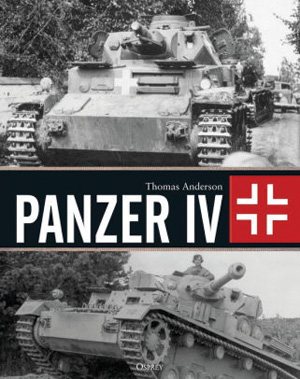 Panzer IV (Thomas Anderson, Osprey Publishing, Oxford, UK, 2021, 304 pp., photographs, index, $40.00, hardcover)
Panzer IV (Thomas Anderson, Osprey Publishing, Oxford, UK, 2021, 304 pp., photographs, index, $40.00, hardcover)
The Panzer IV formed the backbone of Germany’s tank force for much of World War II. Originally designed as a support tank carrying a short-barreled, low-velocity 75mm gun, it underwent numerous evolutions to increase its capability. This occurred mainly due to the German experience during the invasion of the Soviet Union in June 1941. While the panzer columns were remarkably effective, they struggled to deal with the small but growing numbers of T-34 and KV-1 tanks the Soviets could field. By mid-war, Panzer IVs carried long-barreled, high-velocity guns enabling them to engage heavier Allied tanks, making the vehicle a true battle tank. Over 13,000 Panzer IVs and variants were produced, more than the larger Tiger and Panther models combined. While the Panther was slated to replace the Panzer IV as the Wehrmacht’s medium tank, there were never enough tanks to meet Germans’ needs, and so the Panzer IV soldiered on until the end of the war in ever-decreasing numbers.
The author is an established expert on German armored vehicles of World War II and has spent decades gathering information and images from archives throughout Europe and the United States. This effort has paid off with this new book, part of a larger series the publisher created about the major German tank types. This volume focuses on the workhorse Panzer IV. It is beautifully and liberally illustrated and includes with numerous technical tables and charts describing the specifications and organization of the tank and its units.
 The Story of 79th Armoured Division October 1942 – June 1945 (The Naval and Military press Ltd., East Sussex, UK, 2021, 314 pp., maps, photographs, appendices, index, $39.00, softcover)
The Story of 79th Armoured Division October 1942 – June 1945 (The Naval and Military press Ltd., East Sussex, UK, 2021, 314 pp., maps, photographs, appendices, index, $39.00, softcover)
The 79th Armoured Division proved one of Great Britain’s most unusual but effective military units. Formed in 1942, the division was commanded by General Percy Hobart, an unconventional officer who proved perfect for his assignment. Hobart and his division’s role was to provide specialist armoured vehicles for the invasion of Europe, which came at Normandy in June 1944. Innovations such as the floating Duplex Drive (DD) tank, engineer assault tanks, and tanks with mine-clearing devices were just a few of the vehicles designed for the 79th. Despite problems in their employment, these vehicles proved useful during both the Normandy landings and the subsequent Rhine River crossings in 1945.
This is a reprint of a book written in the immediate postwar period; many Allied divisions published such books to document their exploits and provide a sort of “yearbook” for their members. These books are often valuable for their narratives, derived from first-person accounts and reports written during or soon after their respective actions. This work falls into that category and is of interest due to its coverage of specialist armored and engineering vehicles during the heavy fighting in Northwest Europe.
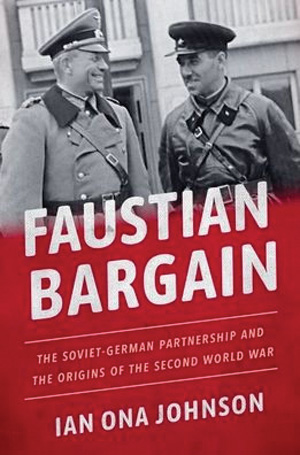 Faustian Bargain: The Soviet-German Partnership and the Origins of the Second World War (Ian Ona Johnson, Oxford University Press, Oxford, UK, 2021, 339 pp., notes, bibliography, index, $29.95, hardcover)
Faustian Bargain: The Soviet-German Partnership and the Origins of the Second World War (Ian Ona Johnson, Oxford University Press, Oxford, UK, 2021, 339 pp., notes, bibliography, index, $29.95, hardcover)
Unlikely and temporary allies, Nazi Germany and the Soviet Union nevertheless cooperated long enough to carve up Poland and get World War II going in earnest. The Poles, already reeling from the German invasion of September 1, 1939, received another shock on September 16, when the Polish Ambassador to Moscow was given a startling message. The “Polish-German war has revealed the internal inadequacy of the Polish State … the Soviet Government intends to liberate the Polish people from the unfortunate war, where it was cast by its irrational leaders, and give them the opportunity to live a peaceful life.” Within hours, 500,000 Soviet troops crossed Poland’s eastern border. The campaign ended 11 days later. The German-Soviet détente could never have lasted, but in the short term it allowed each country freedom of action without the fear of war between them. Russo-German cooperation began soon after World War I ended, giving the Germans a way to re-arm without triggering the Versailles Treaty, while the Soviets received technical expertise they sorely lacked.
This story ends in fire, with the two nations locked in a death struggle. How they got there is the focus of this new work. The author delves into the details of German and Soviet interactions, revealing how they helped each other while simultaneously spying and stealing when they could. This book is essentially a “prequel” to the war on the Eastern Front.
 The 1945 Burma Campaign and the Transformation of the British Indian Army (Raymond A. Callahan and Daniel Marston, University Press of Kansas, Lawrence, KS, 2021, 288 pp., maps, photographs, notes, bibliography, index, $34.95, hardcover)
The 1945 Burma Campaign and the Transformation of the British Indian Army (Raymond A. Callahan and Daniel Marston, University Press of Kansas, Lawrence, KS, 2021, 288 pp., maps, photographs, notes, bibliography, index, $34.95, hardcover)
The Imperial Japanese Army’s worst defeat of World War II came at the hands of the Indian British 14th Army during 1945. Its commander, General William Slim, spent years rebuilding and modernizing this field army after it retreated from Burma in 1942. His efforts turned 14th Army into a premier fighting force that won a pair of defensive battles in 1944 and went over to the offensive in 1945. The Japanese suffered harsh defeats under Slim’s attacks. Aside from the military aspect, the 14th Army also factored into the political fortunes of the British Empire and Southeast Asia. The exigencies of war forced the British to increase the number of Indians serving as officers, and many of these were nationalists, eager to see the end of British rule in postwar India.
The authors, both prominent scholars, have taken a study of one of the forgotten campaigns of the war and used it to vividly portray its wide-ranging effects on the future of India. Their account reveals how changing times and conditions blended to influence postwar events. Indian troops fought their way through Burma with diminished British leadership, giving Indian leaders both the experience and professionalism to help realize their nation’s independence just a few years later.
 Retreat (John Guzlowski, Kazva Press, St. Paul, MN, 2021, 300 pp., $14.95, softcover)
Retreat (John Guzlowski, Kazva Press, St. Paul, MN, 2021, 300 pp., $14.95, softcover)
Magda Dressler is a war widow living in Berlin, her husband killed early during the war. Hans Metzger is a young soldier wandering the city during a furlough. The two meet and form a relationship before Hans returns to the Eastern Front. Nine months later, she is trying to survive as Berlin is bombed into ruin. Hans is trying to do the same in the hell of the Russian Front during brutal combat. Each is doing what they must to stay alive while maintaining a semblance of humanity during the dreadful end of World War II.
The author was born a displaced person in a camp after the war. His parents were Poles, forced to work as slave laborers for the Nazis. He came to America in 1951 and grew up in “Murdertown,” a tough neighborhood in Chicago. He became a teacher and poet. This novel gives a voice to the millions of nameless people who lived through the war in various roles and guises, survived, and went on to build lives afterward.
New and Noteworthy
 Fieldcraft, Sniping and Intelligence (Lt. Col. Nevill A.D. Armstrong, Naval and Military Press, 2021, $11.99, softcover). This is a classic World War II sniper’s handbook. The author was a successful Word War I sniper and wrote his experiences down for snipers in the next war.
Fieldcraft, Sniping and Intelligence (Lt. Col. Nevill A.D. Armstrong, Naval and Military Press, 2021, $11.99, softcover). This is a classic World War II sniper’s handbook. The author was a successful Word War I sniper and wrote his experiences down for snipers in the next war.
Royal Engineers Battlefield Tour: Normandy to the Seine (Naval and Military Press, 2021, $61.00, softcover). After World War II, the British Army’s Royal Engineers compiled numerous battlefield reports to document the progress of the war. This initial volume covers the period from D-Day to the crossing of the Seine River.
Royal Engineers Battlefield Tour: The Seine to the Rhine (Naval and Military Press, 2021, $61.00, softcover). This second volume of the classic British Army text covers the period through to the Rhine River Crossings. Each book has a selection of photographs and color maps.
Red Star at War: Victory at All Costs (Colin Turbett, Pen and Sword, 2020, $34.95, hardcover). The war on the Eastern Front was so vast that personal stories tend to become lost. This book collects accounts of Soviet soldiers and civilians.
The Second World War Illustrated: The Second Year (Jack Holroyd, Pen and Sword, 2020, $24.95, softcover). This new series collects photographs of the war, organized by year. It includes a color insert.
 The Final Archives of the Fuhrerbunker (Paul Villatoux and Xavier Aiolfi, Casemate, 2021, $37.95, hardcover). In November 1945, two French officers found a cache of overlooked papers and other items in the now-abandoned Fuhrerbunker. This work uses those documents to expand the understanding of what happened in the Reich’s final days.
The Final Archives of the Fuhrerbunker (Paul Villatoux and Xavier Aiolfi, Casemate, 2021, $37.95, hardcover). In November 1945, two French officers found a cache of overlooked papers and other items in the now-abandoned Fuhrerbunker. This work uses those documents to expand the understanding of what happened in the Reich’s final days.
German 88mm Gun Versus Allied Armour: North Africa 1941-43 (David Greentree and David Campbell, Osprey Publishing, 2021, $22.00, softcover). The fearsome and effective 88mm cannon wrought havoc among British and American tank units during the fighting in North Africa. The book is lavishly illustrated and includes substantial technical details.
Arctic Front: The Advance of Mountain Corps Norway on Murmansk, 1941 (Wilhelm Hess, Casemate Publishers, 2021, $45.00 hardcover). The author was a quartermaster in the German Mountain Corps, which attacked toward Murmansk. This is his account of the campaign.
First Burma Campaign: The Japanese Conquest of 1942 by Those Who Were There (Compiled by Col. E.C.V. Foucar, Frontline Books, 2021, $59.95, hardcover). The war in Burma is covered in detail by an officer whose duty was to document it just after the campaign ended.
The War Against Japan 1941-1945 Atlas (Naval and Military Press, 2021, $46.00, softcover). This volume collects all 223 maps and sketches from the official British campaign history. The book provides a good visual reference for all the major actions of the war.
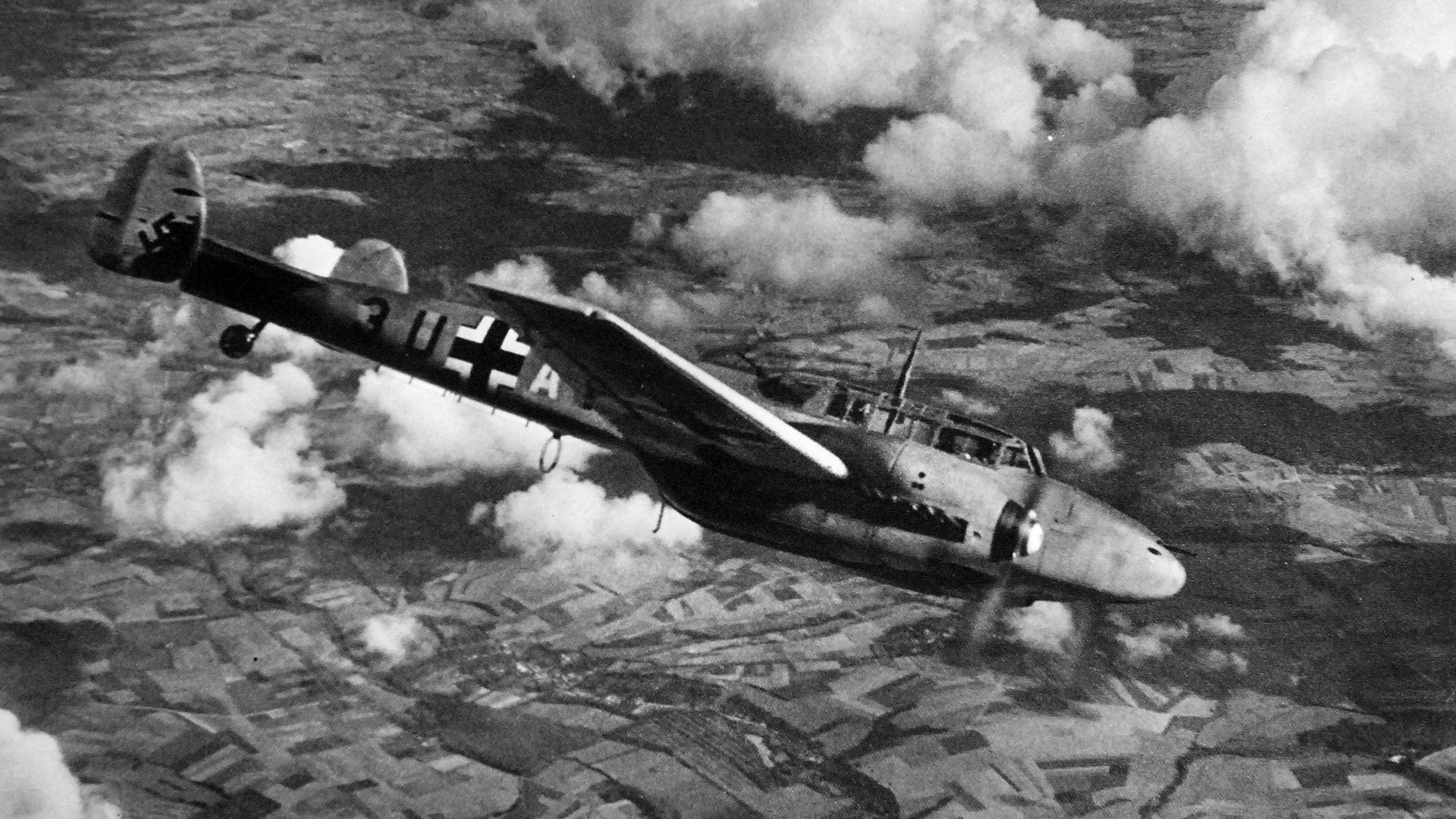
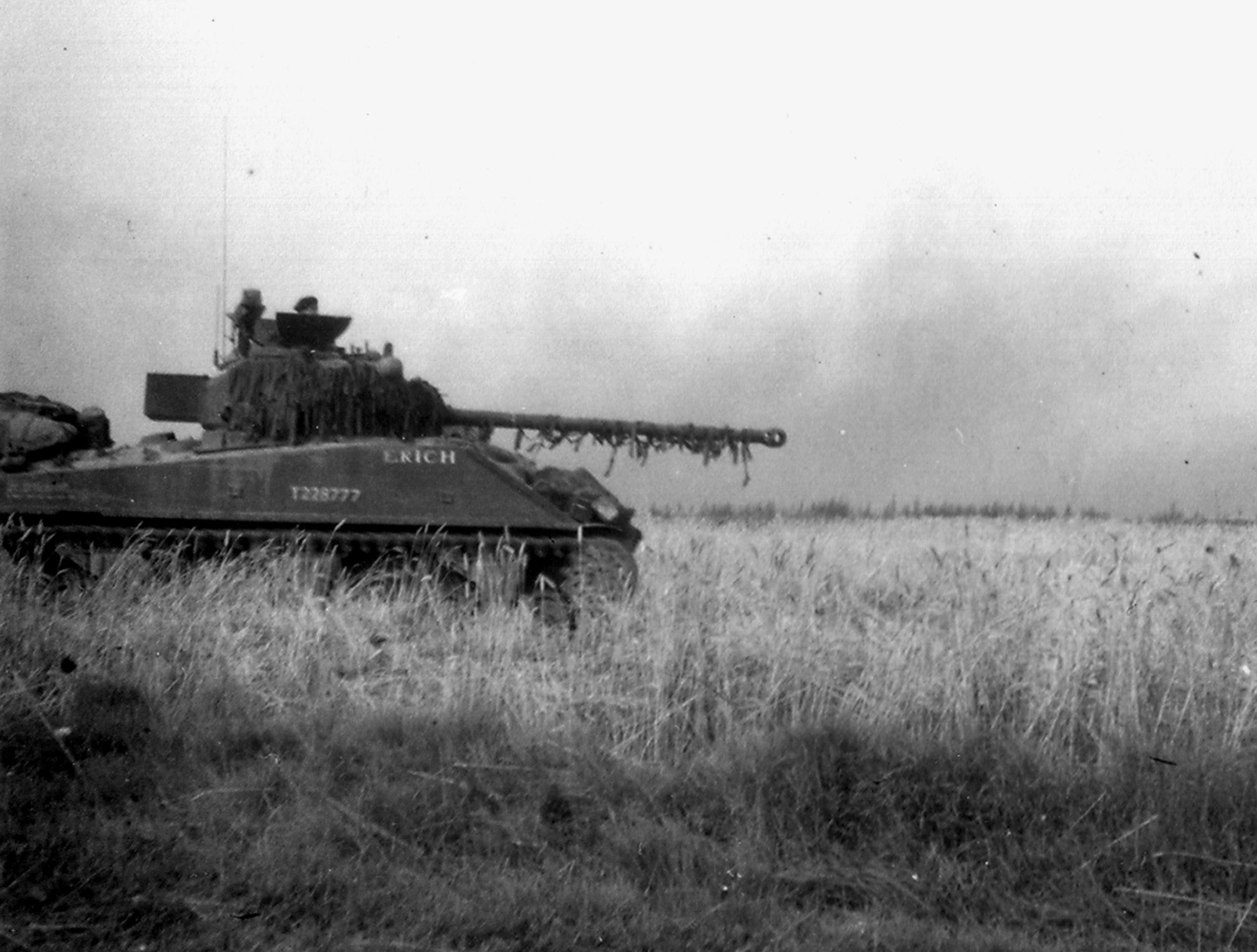

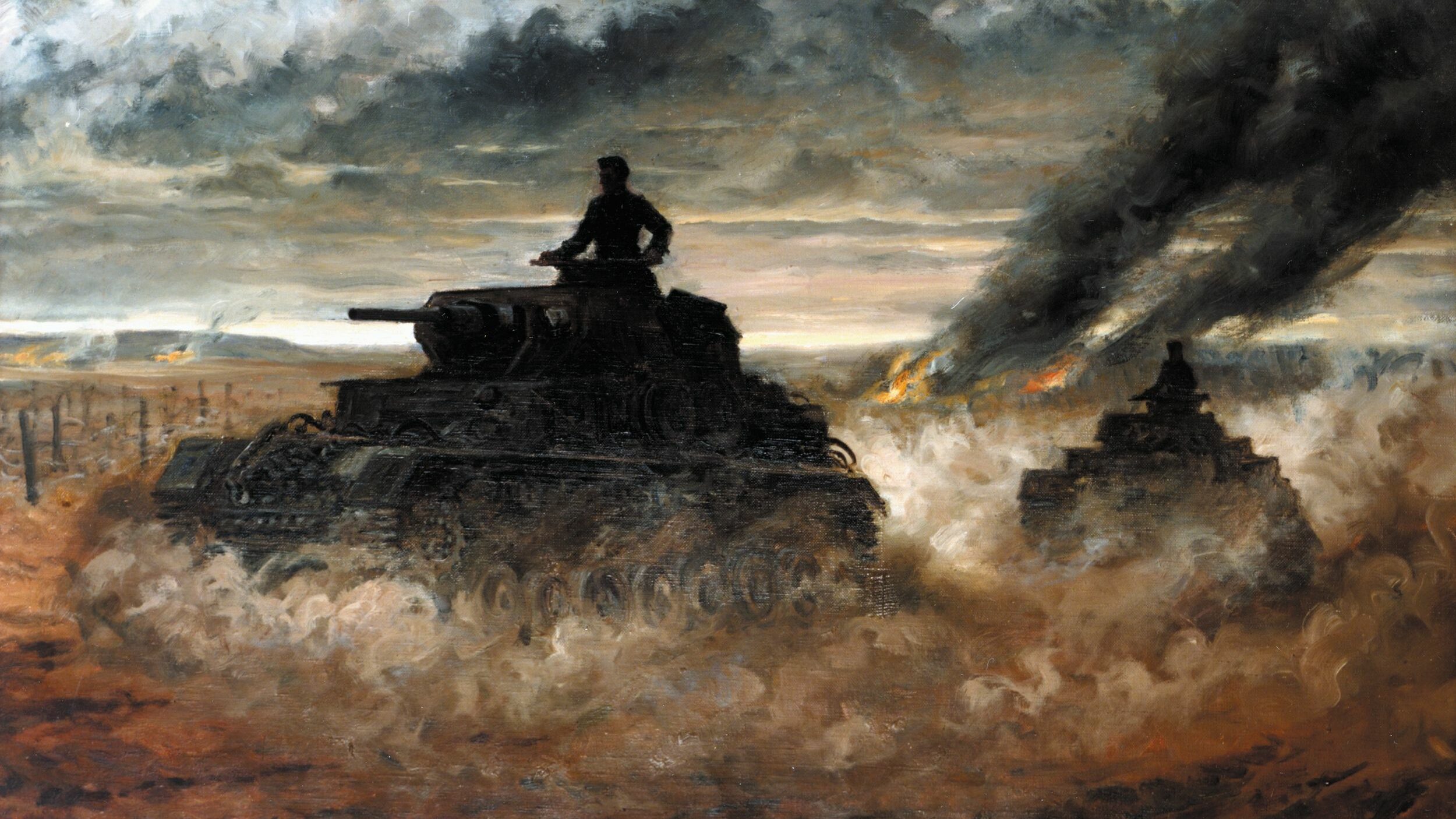
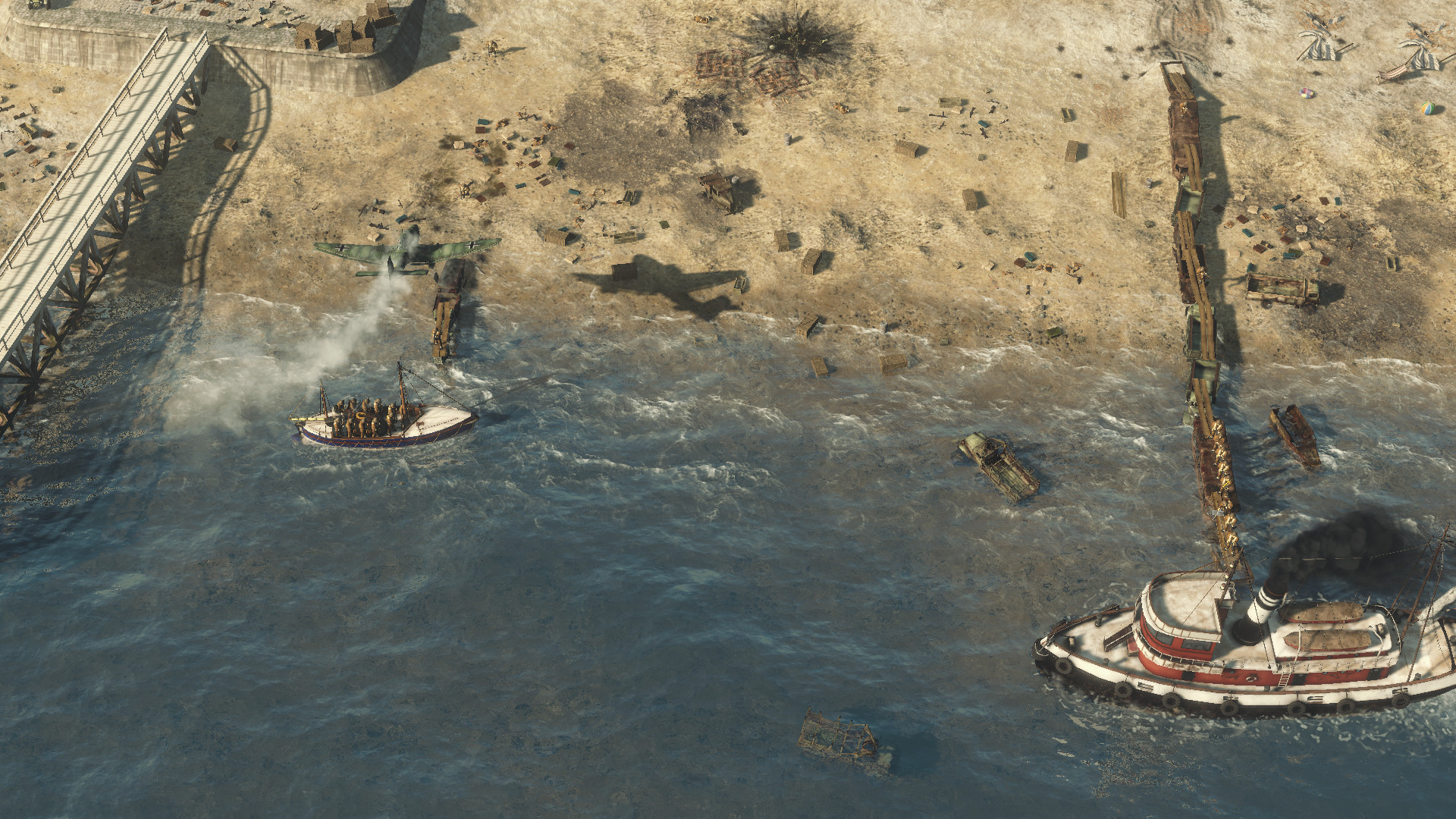
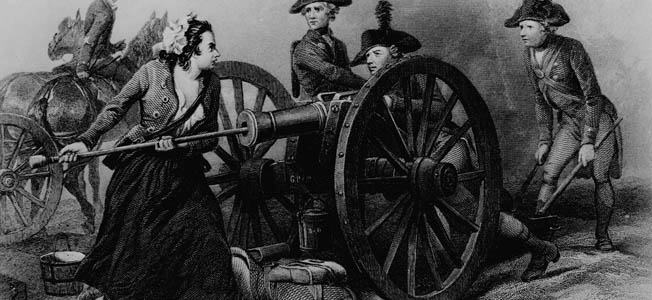
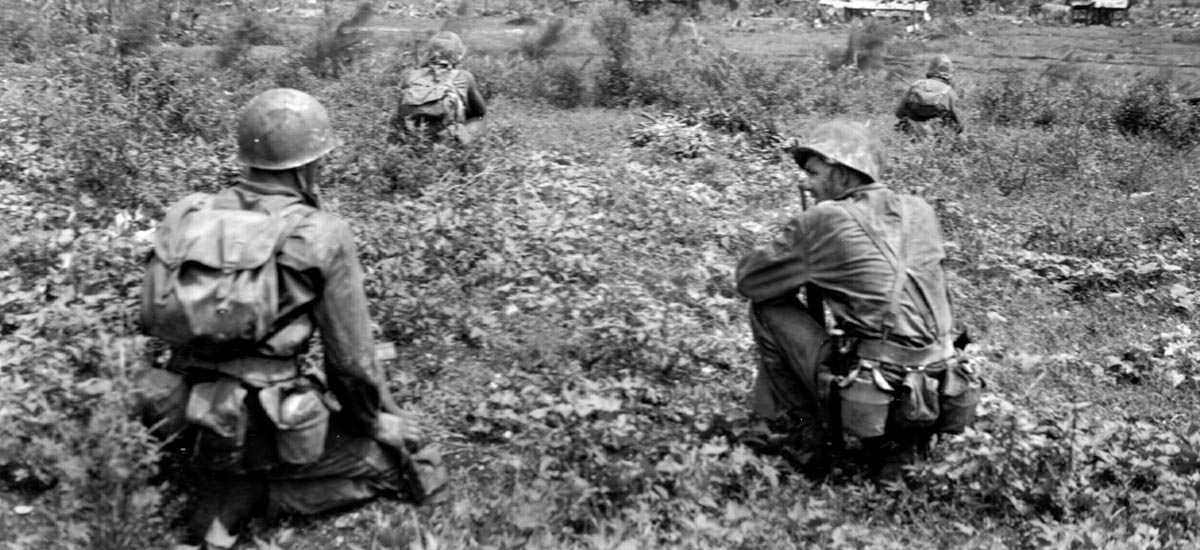
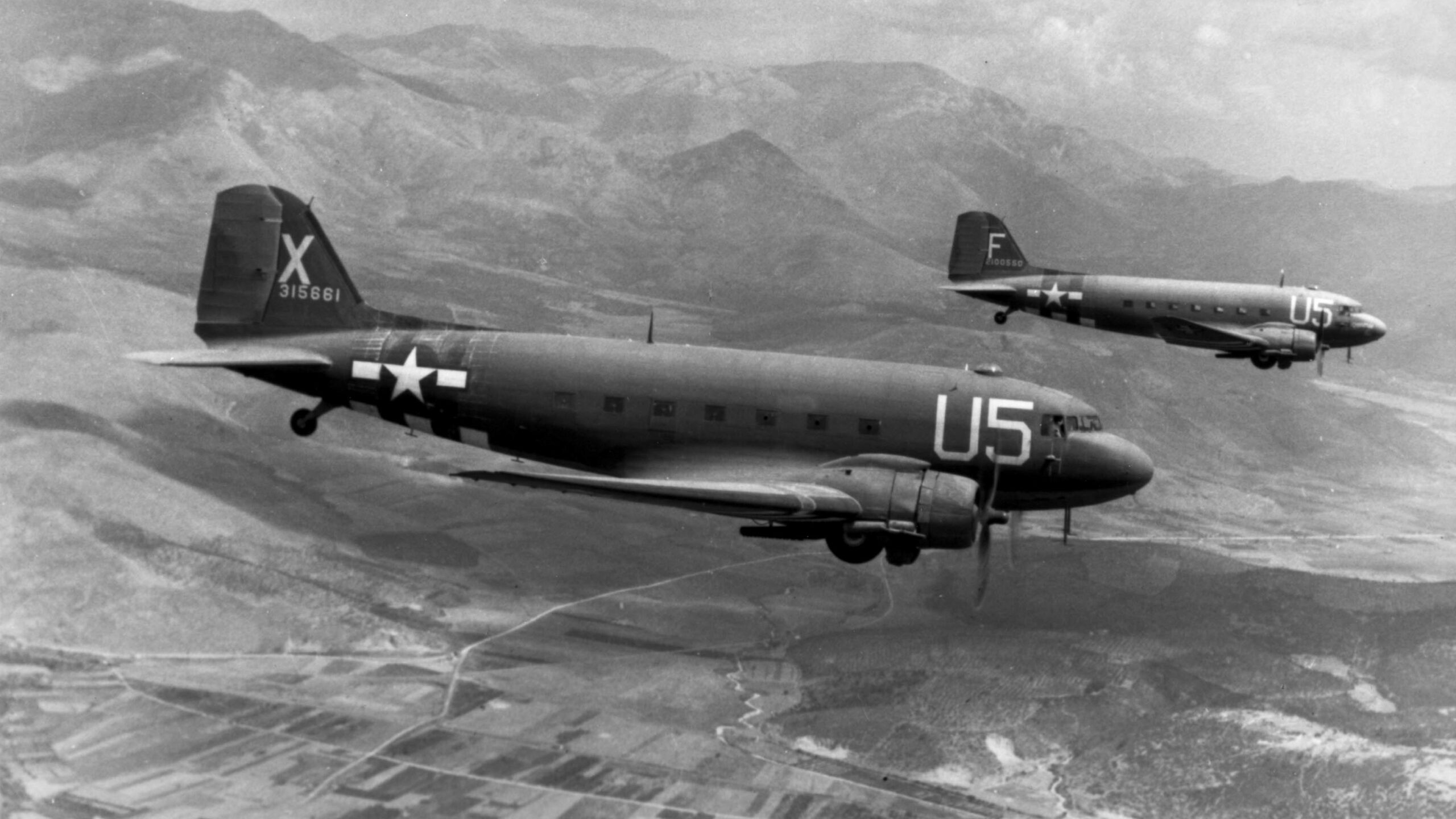
Join The Conversation
Comments
View All Comments